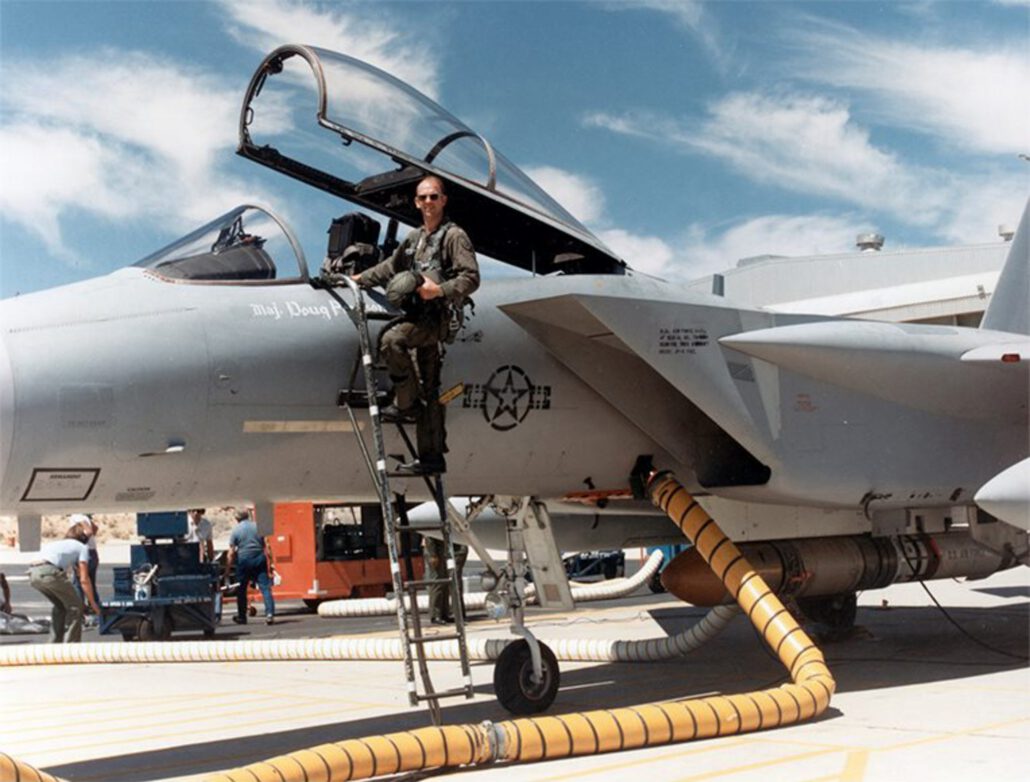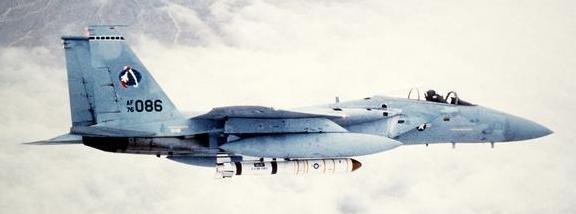Celestial Eagle: Historic F-15 anti-satellite mission remembered
By Senior Airman Erik Hofmeyer, 482nd Fighter Wing Public Affairs
HOMESTEAD AIR RESERVE BASE, Fla. — The F-15 test pilot settled into the cockpit of the premier fighter jet in the world at Edwards Air Force Base, Calif., awaiting takeoff with a 2,700 pound, 18-foot long missile mounted to the jet’s centerline.
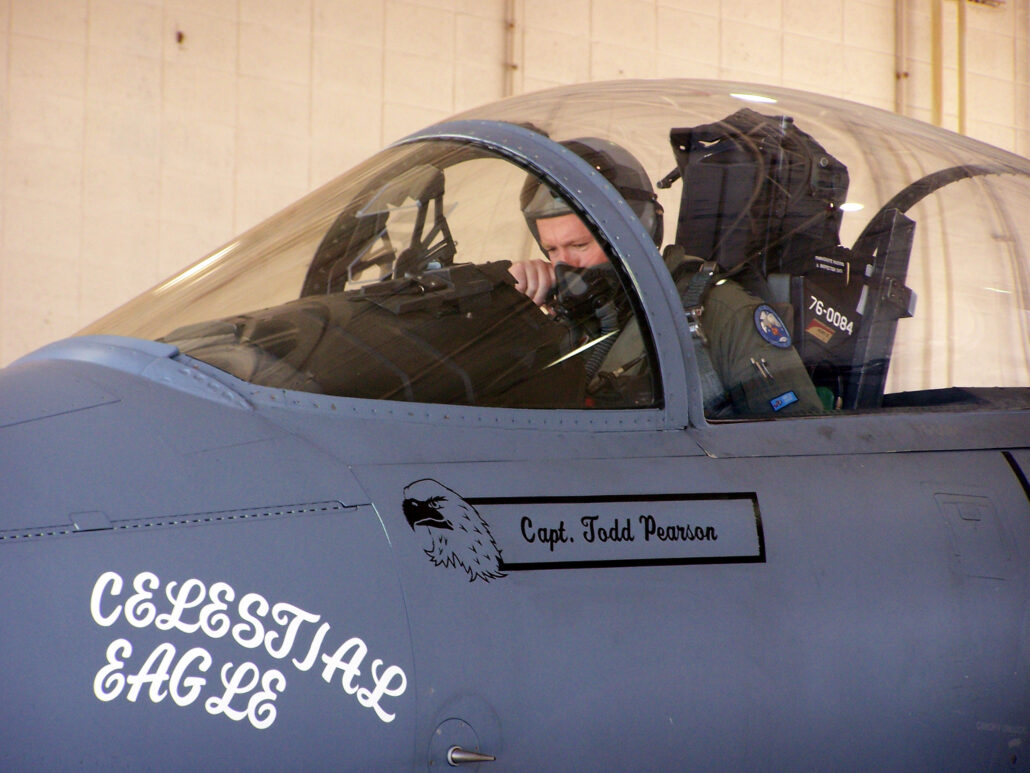
The mission, dubbed the “Celestial Eagle Flight,” called for a nearly vertical ascent to 35,000 feet and firing the missile through earth’s atmosphere to kill a satellite over 2000 miles away at an altitude of 300 miles.
The F-15 Anti-Satellite Combined Test Force had been close to perfecting an air-launched missile capable of destroying orbiting satellites threatening the United States in previous flights, but this clear day in the Mojave Desert was different. On Sept. 13, 1985, Maj. Wilbert D. “Doug” Pearson took off along with other chaser aircraft, ascended to 35,000 feet and fired in the heavens.
The rocket separated from the missile after the first stage, and the rocket propelled a miniature homing vehicle into space on a perfect collision course with the target satellite, marking the only successful satellite kill by an aircraft launched missile in history.
Fast forward almost 22 years later.
Staff Sgt. Aaron Hartley, a Florida Air National Guard 125th Fighter Wing, Detachment 1, crew chief and aviation history enthusiast, was tasked with putting together a lithograph for the North American Aerospace Defense Command (NORAD) F-15 Alert Detachment at Homestead Air Reserve Base.
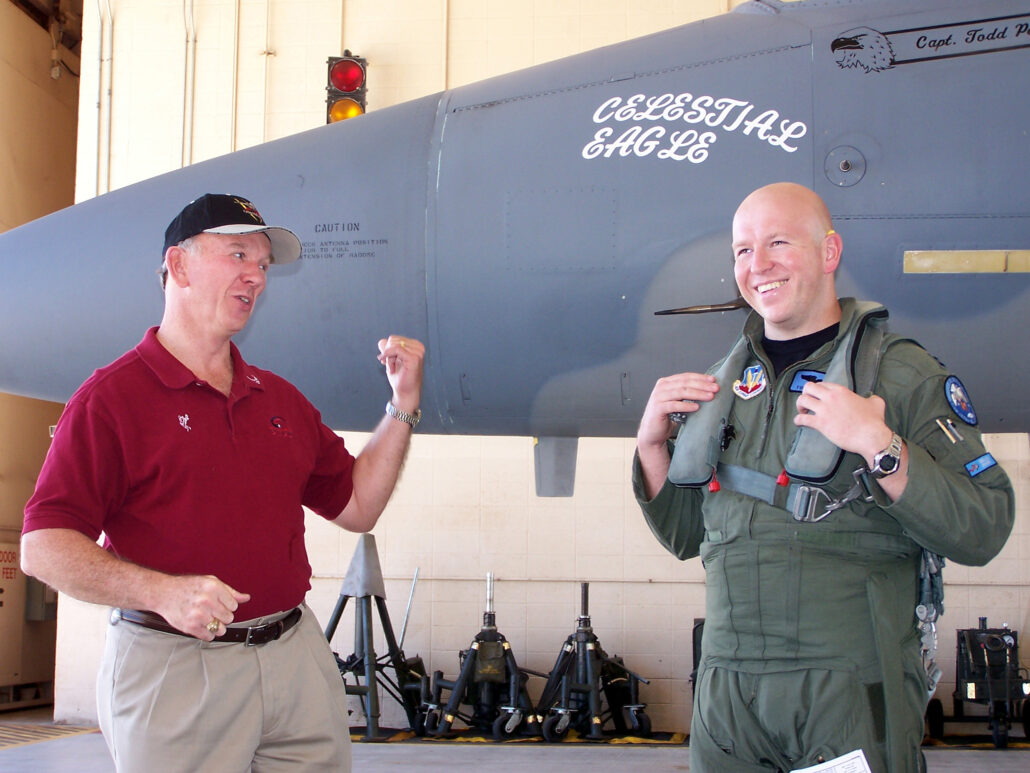
Though based out of Jacksonville, Fla., Sergeant Hartley is assigned full-time to the busiest air defense alert facility in the United States. The 125th FW is responsible for the maintenance of the NORAD alert facility at Homestead ARB and provides armed F-15 aircraft capable of intercepting, identifying, and if necessary, destroying unknown aircraft that penetrate sovereign U.S. airspace. In the past, this threat has included narcotics trafficking aircraft, unidentified aircraft straying into restricted airspace and Cuban fighter jets.
“I was researching the history of the jets to see which one was the ‘coolest’ and had the most history, so I contacted historians from the Boeing Company, Edwards AFB and the Air Force Historical Research Society at Maxwell AFB, Ala.,” Sergeant Hartley said.
Sergeant Hartley learned that tail number 76-0084, currently assigned to the 125th FW, was the same jet Major Pearson had flown during the Celestial Eagle Flight almost 22 years prior. The pilot is now retired Major General Pearson and the vice president of the Lockheed Martin F-35 Integrated Test Force.
Sergeant Hartley contacted General Pearson via email, and the two began correspondence about the anti-satellite mission. On a whim, General Pearson said that he’d love to fly the aircraft again and that his son, Capt. Todd Pearson, was an active-duty F-15 pilot at Mountain Home AFB, Idaho. And the idea of a Celestial Eagle remembrance flight piloted by Captain Pearson was born.
“We talked about the possibilities of bringing Todd down here to fly, and it really brought back a flood of memories,” General Pearson said.
To make the event even more special, the family had a treasured photo of the father and son sitting in the cockpit of 76-0084 on Sept. 13, 1985, merely hours before the flight.
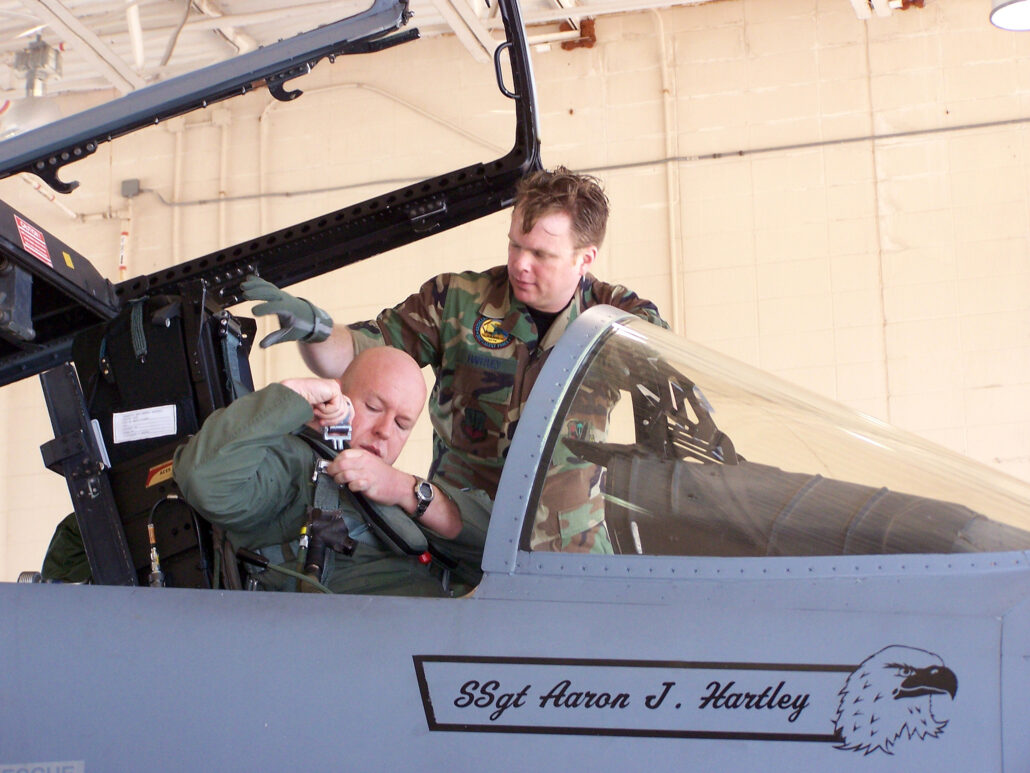
“This is an awesome event and a way for the Air Force to connect from generation to generation. Also, we’re in the middle of the 60th Anniversary of our Air Force, and here’s another anniversary event,” the general said.
On Sept. 13, 2007, General Pearson and his family arrived at the 125th FW alert facility exactly 22 years after the historic flight. Although, now the captain was flying training missions alongside 125th FW pilots instead of testing anti-satellite weaponry.
In commemoration of the historic day, “Celestial Eagle” was painted on the nose of 76-0084, and the captain’s name was painted on the side of the cockpit as a welcoming surprise. Captain Pearson was even wearing the same circular patch on his left shoulder that his father wore on that same day years ago, and they performed the pre-flight walk around the aircraft together.
“I thought it was a great idea,” Captain Pearson said regarding the remembrance flight. “I’ve always been an aviation ‘buff,’ and I’ve wanted to fly eagles since I was three because my dad flew them. The flight was a significant event in military aviation history, and I’m glad that I’ve been able to be a part of this 22 years later.”
(F-15A 76-0084 was the 275th F-15 fighter jet to roll off the McDonnell Douglas St. Louis assembly line, and it flew its maiden flight on Veteran’s Day, 1977. Its assignments have included two stints with the 49th Test Fighter Wing at Holloman AFB, the 1st TFW at Langley AFB, the 6512th Test Squadron of the Air Force Flight Test Center at Edwards, AFB, the 131st Fighter Wing of the Missouri Air National Guard in St. Louis and the 125th Fighter Wing of the Florida Air National Guard since February 2005. 76-0084 is scheduled to retire to the Aerospace Maintenance and Regeneration Center “Boneyard” at Davis Monthan AFB in 2009 when the 125th FW transitions to the F-15C/D models.)
